
The House of Este is a European dynasty of North Italian origin whose members ruled parts of Italy and Germany for many centuries.

Jacopo Bellini was one of the founders of the Renaissance style of painting in Venice and northern Italy. His sons Gentile and Giovanni Bellini, and his son-in-law Andrea Mantegna, were also famous painters.
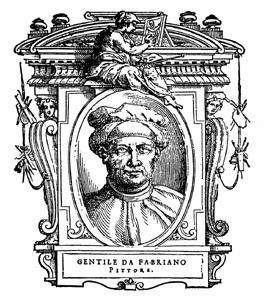
Gentile da Fabriano was an Italian painter known for his participation in the International Gothic painter style. He worked in various places in central Italy, mostly in Tuscany.
Domenico da Piacenza, also known as Domenico da Ferrara, was an Italian Renaissance dancing master. He became a very popular teacher with his students – most notably Antonio Cornazzano and Guglielmo Ebreo da Pesaro – who both later became successful dance masters. At a time between 1452 and 1463, he received the Order of the Golden Spur.

Pisanello, born Antonio di Puccio Pisano or Antonio di Puccio da Cereto, also erroneously called Vittore Pisano by Giorgio Vasari, was one of the most distinguished painters of the early Italian Renaissance and Quattrocento. He was acclaimed by poets such as Guarino da Verona and praised by humanists of his time, who compared him to such illustrious names as Cimabue, Phidias and Praxiteles.

Leonello d'Este was Marquess of Ferrara, Modena, and Reggio Emilia from 1441 to 1450. Despite the presence of legitimate children, Leonello was favoured by his father as his successor. In addition, his virtuous qualities, high level of education, and popularity among the common people as well as his formal papal recognition ultimately made him the most suitable heir.
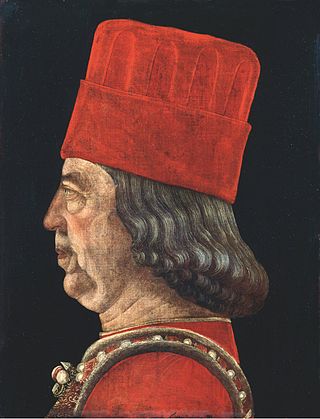
Borso d'Este was the duke of Ferrara the first duke of Modena, which he ruled from 1450 until his death. He was a member of the House of Este.

Niccolò III d'Este was Marquess of Ferrara from 1393 until his death. He was also a condottiero.
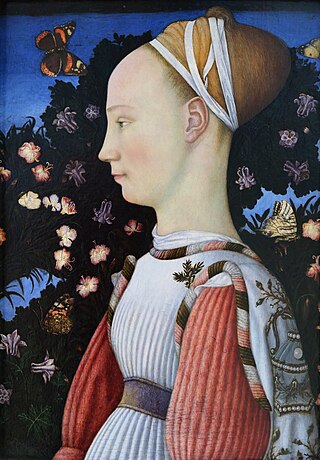
Portrait of Princess is a tempera painting on panel attributed to the Italian Late-Gothic master Pisanello. It was probably executed between 1435 and 1445 and is also known as Portrait of a Princess of the House of Este. It is firmly attributed to Pisanello on stylistic grounds and because he stayed in Ferrara in the period, where he also finished a portrait and a celebrative medal of Marquis Leonello d'Este.
The decade of the 1390s in art involved some significant events.
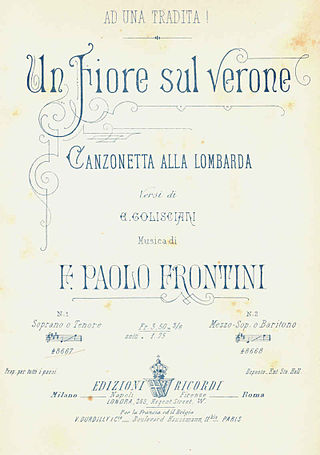
Enrico Golisciani was an Italian author, born in Naples. He is best known for his opera librettos, but also published a slim volume of verses for music, entitled Pagine d'Album ; many more of his poems intended to be set to music were published in the Gazzetta Musicale di Milano.
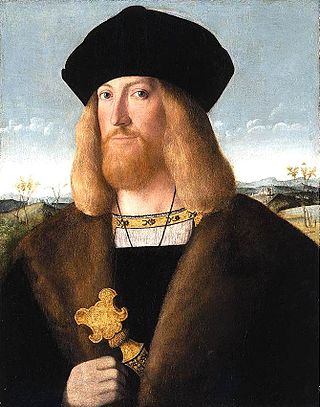
Bartolomeo Veneto was an Italian painter who worked in Venice, the Veneto, and Lombardy. During his time in Venice, he studied under Gentile Bellini. The little information available about Bartolomeo's life has been derived from his signatures, dates, and inscriptions. His best-known works are portraits or pictures with portrait-like character. Bartolomeo's later works, and especially those done on commission in Milan, indicate an influence from the artist Leonardo da Vinci.

Portrait of Francesco d'Este is a small oil on wood panel painting by the Netherlandish painter Rogier van der Weyden dating to around 1460. The work is in good condition and has been in the Metropolitan Museum of Art, New York since 1931. When attributed as a van der Weyden in the early 20th century, there was much speculation amongst art historians as to the sitter's identity. He was identified as a member of the d'Este family from the crest on the reverse, and long thought to be Francesco's father Lionello, an Italian and highly placed Burgundian prince and patron of Rogier. In 1939 Ernst Kantorowicz identified the man as Lionello's illegitimate son Francesco, which is now generally accepted. The panel was painted when the sitter was about 30 years old and is considered one of van der Weyden's finest portraits, in many ways a culmination of his later, more austere work.

The Galleria Estense is an art gallery in the heart of Modena, centred around the collection of the d’Este family: rulers of Modena, Reggio and Ferrara from 1289 to 1796. Located on the top floor of the Palazzo dei Musei, on the St. Augustine square, the museum showcases a vast array of works ranging from fresco and oil painting to marble, polychrome and terracotta sculpture; musical instruments; numismatics; curios and decorative antiques.
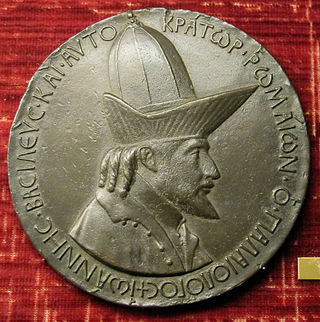
The medal of John VIII Palaeologus is a portrait medal by the Italian Renaissance artist Pisanello. It is generally considered to be the first portrait medal of the Renaissance. On the obverse of the medal is a profile portrait of the penultimate Byzantine emperor, John VIII Palaeologus; the reverse contains an image of the emperor on horseback before a wayside cross. Although the date of the work is not clear it was likely to have been some time during 1438 and 1439, the years John was in Italy attending the Council of Ferrara. It is not known whether the emperor himself or his Italian hosts commissioned Pisanello to make the medal, but Leonello d’Este, the heir apparent to the marquisate of Ferrara, has been suggested as the most likely candidate. Several drawings by Pisanello are closely associated with the medal and these include sketches now held in Paris and Chicago.
Niccolò d'Este may refer to:
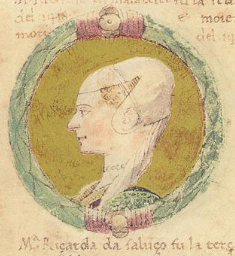
Ricciardia, Marchioness of Saluzzo was an Italian noblewoman. She was the daughter of Thomas III, Marquess of Saluzzo and his French wife Marguerite de Pierrepont, daughter of Ugo II de Pierrepont, count of Roncy and Braine.

The Galleria Giorgio Franchetti alla Ca' d'Oro is an art museum located in the Ca' d'Oro on the Grand Canal in Venice, Italy.
The Studiolo of Isabella d'Este was a special private study, first in castello di San Giorgio, later the Studiolo was moved to the Corte Vecchi apartments in the Ducal Palace in Mantua, designed by, and with a collection of art specially commissioned by Isabella d'Este.

Margherita Gonzaga, Marquise of Ferrara (1418–1439) was a noblewoman of the family House of Gonzaga from Mantua in modern-day Italy. She was the child of Gianfrancesco I Gonzaga, Marquess of Mantua and Paola Malatesta. In 1435 she became the first wife of Leonello d'Este, Marquis of Ferrara through whom she earned the title Marquise of Ferrara. The artist Pisanello gave a wedding gift of a painting of Julius Caesar. This marriage brought an alliance between the House of Gonzaga of Mantua and the House of Este of Ferrara. They had a son Niccolò, who is also known as Niccolò di Leonello to avoid confusion with his grandfather Niccolò III d'Este.
















